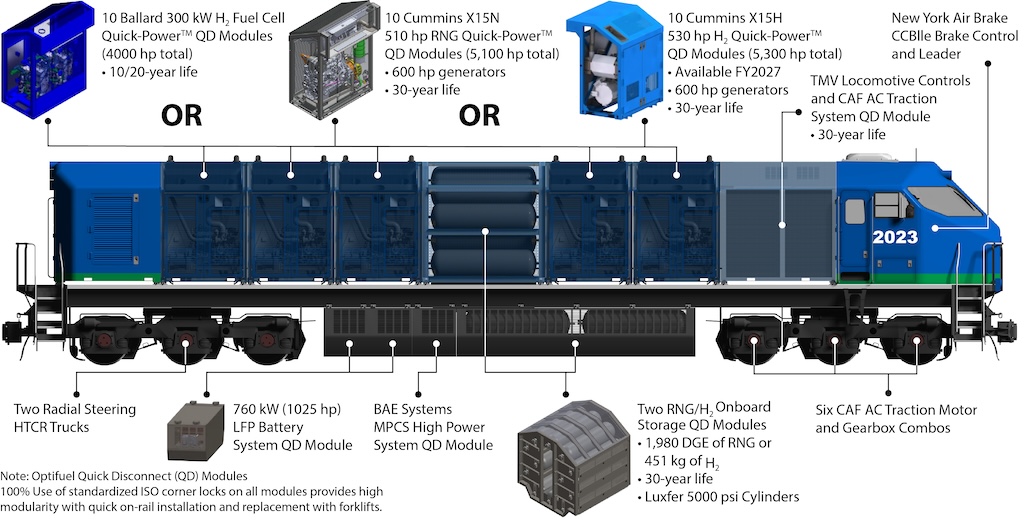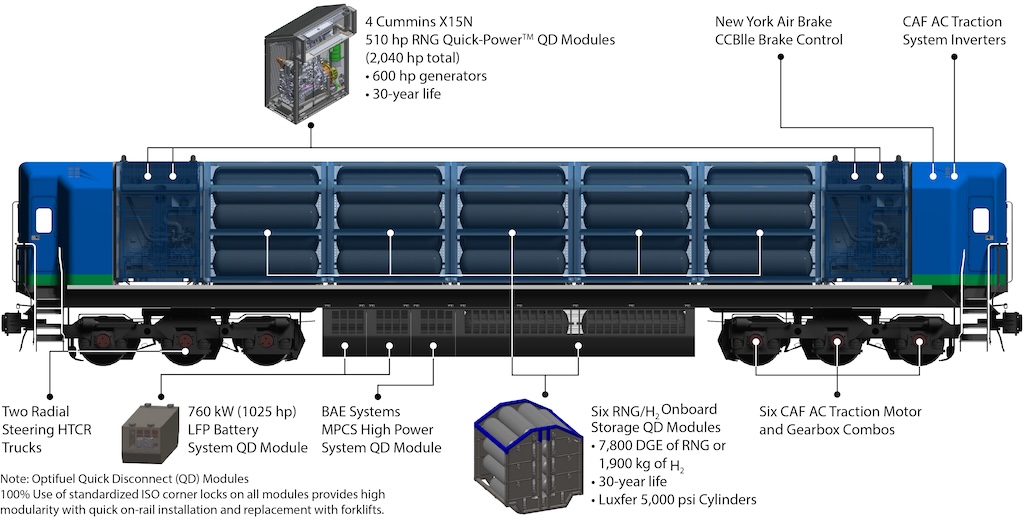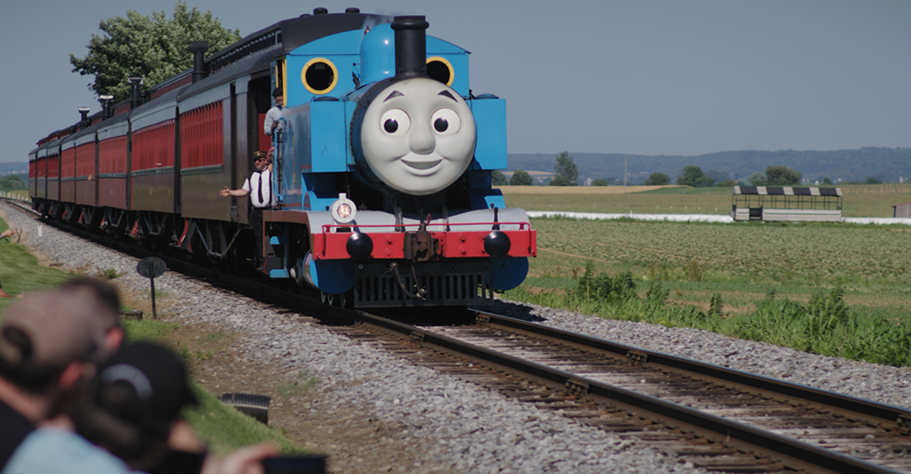
BEAUFORT, S.C. — OptiFuel Systems will begin testing a prototype 5,600-hp zero-emissions renewable natural gas road locomotive and a companion 2,500-hp fuel tender next January at the Federal Railroad Administration’s Transportation Technology Center, the company announced today.
After testing the prototype Total-Zero Renewable Natural Gas Line Haul Locomotive for 12 months, OptiFuel aims to launch a two-year, million-mile test program with 10 pre-production units that would operate around the U.S. The company eyes production of renewable natural gas locomotives beginning in 2028.
The testing at TTC in Pueblo, Colo., will be partially funded by a grant from the U.S. Department of Energy.
The big two locomotive manufacturers — Wabtec and ProgressRail — are focusing their zero-emissions efforts on hydrogen fuel cells and battery-electrics.
“As the designer and builder of the fuel cell, hydrogen storage, and battery modules for Sierra Northern Railway’s hydrogen hybrid switcher locomotives, OptiFuel is uniquely qualified to understand the strength and weakness of battery-electric and hydrogen fuel cell hybrid locomotives,” Scott Myers, OptiFuel’s president, said in a statement. “However, we now believe that RNG is the preferred path to zero emission line haul locomotives and tenders due to the physics of energy storage, overall operating cost, operating risk, fuel availability and cost over the next 20 years. A 4,500-hp, line-haul locomotive requires continuous high power for extended hours, something that neither battery-electric nor hydrogen fuel-cell hybrid line-haul locomotive solutions will be able to do.”
The Class I railroads are aware of OptiFuels’ plans but have not yet expressed an interest in the locomotives until testing is complete, Myers says. “We will not ask them to participate until we finish testing at TTC,” he explains.
Renewable natural gas is produced at municipal solid waste landfills, livestock manure, and wastewater treatment, according to the U.S. Environmental Protection Agency. Carbon dioxide, water, and hydrogen sulfide are removed from the biogas when processing it for use as a fuel.
OptiFuel says its Total-Zero RNG-Electric Line Haul Locomotive will have zero well-to-wheel nitrogen oxides and particulate matter emissions and negative carbon intensity while simultaneously improving fuel cost and operating range by 25%.
The OptiFuel locomotive produces 5,100 continuous power from zero emission Cummins RNG engines using OptiFuel’s Quick-Power technology with a peak power of 5,600 horsepower with the standard LFP battery pack.
OptiFuel’s partners include GTI Energy, Cummins, BAE Systems, Luxfer Gas Cylinders, TMV Control Systems Inc., ENSCO, CAF Group, New York Air Brake, and Powerhouse, a Marmon Rail company.
















So basically a fart powered locomotive
I’m all for using bio-generated methane for something, rather than letting it freely escape into the atmosphere, but this initiative strikes me as a greenwashing effort. There are lots of less complicated ways to productively use recovered methane.
Propane has powered a lot of equipment and vehicles for years and has a higher energy content than natural gas. Too much negative emissions or what ?
At least it’s readily available.
I’m getting an ACE 3000 vibe right now.
No walkways on the outside and the onboard storage modules appear to take up the width of the body. How do crews pass from one end of a unit to the other?
Looks like there is a center passageway through the unit.
I assume “zero emissions” actually means zero net emissions and “renewable natural gas” actually means biologically derived methane. I wonder if gas turbis would make more sense than the genset engines.
locomotives running on natural gas is interesting but why this locomotive design i thought the GEVO and the SD70ACe are great